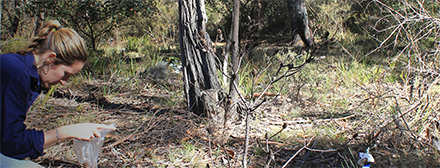Over the past 5 years, the NSW government has committed millions of dollars to fire and recently $1.2 million to ecological research. Much of the fire research funding has been used to justify operational fire management policy, that fails to facilitate greatly increased levels of bushfire mitigation.
Consequently, during periods of below average rainfall as occurred through 2018, 2019 and the early part of 2020, biodiversity, farmers, livestock and regional communities pay an unnecessarily high price from high intensity wildfires.
South East Timber Association (SETA) members are deeply concerned that the latest raft of funding will be spent, with little to show. Researchers must focus their attention on issues that can be managed and on root causes, not symptoms of the dieback and the general decline in forest health. Otherwise, little value will be gained from the latest research funding announcement.
Farmers have long understood the role of soil chemistry in determining the success or failure of farming operations. Soil pH (acidity) and overall fertility are key issues that must be addressed to grow healthy crops and pastures. Farmers know that increasing levels of available aluminium, manganese, copper and zinc, with increasing soil acidity, means unhealthy or dead crops.
In the case of natural ecosystems, much less research has been undertaken to understand the impact of changing soil chemistry on the underlying health of Australia’s native forests. In the past decade, it seems research into eucalypt forest health has moved more into researching the symptoms of forest decline, rather than the root causes of that decline.
The papers at the links below should be compulsory reading for anyone who gets any of the $1.2 million in research grants. Given some of the organisations that have scored grants, SETA members are concerned money will be spent on eco-political rather than science agendas.
It is interesting that dieback has increased since the recorded level of low intensity burning has declined by more than 70% in NSW. SETA recommends that the research collective give the bell birds a break. Instead, they should focus on the medium to long term impacts of our collective failure to apply fire to the landscape in a way that mitigates bush fire risk and restores soil chemistry and biological function and other ecological processes to similar to those which prevailed under Aboriginal land management regimes.
Click here for sciencedirect article: Eucalypt decline in Australia and a general concept of tree decline and dieback








